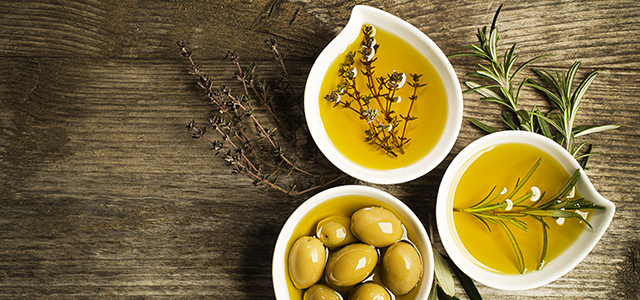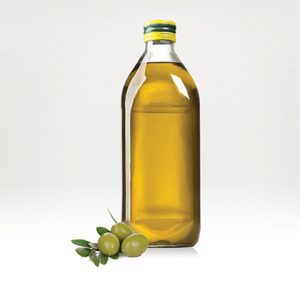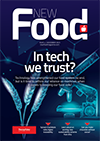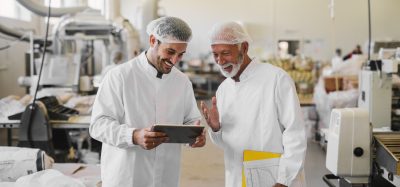Charged aerosol detection for LC analysis of triglycerides: A novel tool for extra-virgin olive oil characterisation
- Like
- Digg
- Del
- Tumblr
- VKontakte
- Buffer
- Love This
- Odnoklassniki
- Meneame
- Blogger
- Amazon
- Yahoo Mail
- Gmail
- AOL
- Newsvine
- HackerNews
- Evernote
- MySpace
- Mail.ru
- Viadeo
- Line
- Comments
- Yummly
- SMS
- Viber
- Telegram
- Subscribe
- Skype
- Facebook Messenger
- Kakao
- LiveJournal
- Yammer
- Edgar
- Fintel
- Mix
- Instapaper
- Copy Link


About this webinar


The ∆ECN42 determination is one of the methods available for detection of small amount of seed oil mixed with olive oil. However, from an analytical point of view, the use of refractive index detector for triglycerides analysis, which is recommended by European legislation and the IOC, prevents gradient elution separations, thus leading to incomplete TAGs resolution and overlapping peaks.
Over the past few years, charged aerosol detection has become a widely used technology in laboratories. The charged aerosol detector (CAD) generates a signal in direct proportion to the quantity of analyte present. Furthermore, it can be used with gradient elution, thus representing a potential alternative to refractive index detector.
In the present study, ultrahigh pressure liquid chromatography coupled with CAD detection was applied to the analysis of extra-virgin olive oil triglycerides. Different chromatographic separations under gradient elution were proposed and optimized using C30 and C18 reversed-phase columns. The performance of CAD detector for trilinolein analysis was deeply investigated (linearity, LOD, LOQ, repeatability).
Finally, the proposed UHPLC-CAD methodology has been also applied to the determination of trilinolein and ∆ECN42 in extra virgin olive oil mixed in different proportions to simulate the adulteration of olive oil with high oleic sunflower oil, palm olein and a mix of them at different percentages of 2, 4, 6, 8 and 10 %.
Keynote speakers


Dept.of Agri-Food, Environmental and Animal Sciences
University of Udine
Professor of Food Chemistry at University of Udine since 1992. Previous Work:
- 10 years at Food Fraud Detection of Ministry of Agriculture of Italy. 1982 – 1992.
- Laboratory technician at University of Bologna (lipochemistry group).1973 – 1982
- Chairperson of Olive Oil Chemist Expert group at UE, DG AGRI. 1993 – 2011. These days he is Italian delegate within the group.
- Also a member of the Olive oil chemistry group of International Olive Council and of the Italian Technical Committee for Fats and Oils and of the Group edible fats and oils of UNI (Italian corresponding body of ISO).
L.Conte is author or co-author of ~ 200 papers on scientific journals, dealing with development and validation of methods suitable to assess purity and quality of fats and oils and other food lipids. From 2010, L.Conte is chairperson of Italian Society for Researches on Fats and Oils


Dept.of Agri-Food, Environmental and Animal Sciences
University of Udine
Dr. Paolo Lucci attained his PhD in 2008 at SAIFET department of the Polytechnic University of Marche (Italy).
- Starting from February 2009, he joined the NASCENT European Project as an experienced researcher at POLYIntell SAS (France) and then in 2010 he spent one year as experienced researcher at the Department of Analytical Chemistry of the University of Barcelona within the Carbosorb European Project.
- In April 2011, he joined the School of Sciences of the Pontificia Universidad Javeriana (Colombia) where he was named head of the research group of “Foods, Nutrition and Health” in 2012 and then head of the Department of Nutrition and Biochemistry in 2014.
Currently, he is a Senior Researcher in Food Chemistry at University of Udine (Italy). He has published several scientific papers and book chapters and he is editor of two books focused on sample treatment and LC-MS in food analysis.
Supported by:
![]()
![]()
Thermo Fisher Scientific has advanced instrumentation that can help in the area of food adulteration to determine the known and unknown contaminants of the food and beverage product. Their state of the art products help labs check for the adulteration of edible oils to fruit juices and many other products. Their instruments help government agencies and contract laboratories determine if a particular product has been adulterated.
More in this webinar series…
Use of stable isotope analysis in commercial food authenticity testing
Date: 29 March 2017 | Time: 15.00 BST
Speaker: Dr. David Psomiadis, Laboratory Manager, Imprint Analytics GmbH
Can we perform gelatin speciation and adulteration using bioinformatics, proteomics and high resolution mass spectrometry?
Date: 27 April 2017 | Time: 15.00 BST
Speaker: Dr Francis Beaudry, University of Montreal, Canada
When honey is not all honey and other tales of food adulteration: Ion chromatography as a tool for detecting food fraud
Date: 7 June 2017 | Time: 15.00 BST
Speaker: Dr. Jeff Rohrer, Thermo Fisher Scientific
Chemical profiling and differential analysis of whiskies using Q Exactive™ GC Orbitrap™ GC-MS/MS
Date: 11 July 2017 | Time: 15.00 BST
Speaker: Dominic Roberts, Thermo Fisher Scientific
The rest of this content is restricted - login or subscribe free to access


Why subscribe? Join our growing community of thousands of industry professionals and gain access to:
- bi-monthly issues in print and/or digital format
- case studies, whitepapers, webinars and industry-leading content
- breaking news and features
- our extensive online archive of thousands of articles and years of past issues
- ...And it's all free!
Click here to Subscribe today Login here







